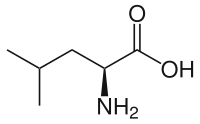
SERTAD3 induces proteasomal degradation of ZIKV capsid protein and represents a therapeutic target
Sign Up to like & getrecommendations! Published in 2023 at "Journal of Medical Virology"
DOI: 10.1002/jmv.28451
Abstract: Zika virus (ZIKV) is a mosquito‐borne RNA virus that belongs to the Flaviviridae family. While flavivirus replication is known to occur in the cytoplasm, a significant portion of the viral capsid protein localizes to the… read more here.
Keywords: capsid protein; zikv; capsid; proteasomal degradation ... See more keywords

HDAC-mediated deacetylation of KLF5 associates with its proteasomal degradation.
Sign Up to like & getrecommendations! Published in 2018 at "Biochemical and biophysical research communications"
DOI: 10.1016/j.bbrc.2018.04.153
Abstract: Krüppel-like factor 5 (KLF5) is a basic transcription factor that regulates diverse cellular processes during tumor development. Acetylation of KLF5 at lysine 369 (K369) reverses its function from promoting to suppressing cell proliferation and tumor… read more here.
Keywords: degradation; acetylation; deacetylation; klf5 ... See more keywords

CRL4BRBBP7 targets HUWE1 for ubiquitination and proteasomal degradation.
Sign Up to like & getrecommendations! Published in 2018 at "Biochemical and biophysical research communications"
DOI: 10.1016/j.bbrc.2018.05.008
Abstract: The E3 ubiquitin ligase HUWE1/Mule/ARF-BP1 plays an important role in diverse biological processes including DNA damage repair and apoptosis. Our previous study has shown that in response to DNA damage HUWE1 was downregulated in CUL4B-mediated… read more here.
Keywords: dna damage; degradation; huwe1; proteasomal degradation ... See more keywords

The prokaryotic ubiquitin-like protein presents poor cleavage sites for proteasomal degradation.
Sign Up to like & getrecommendations! Published in 2021 at "Cell reports"
DOI: 10.1016/j.celrep.2021.109428
Abstract: In an event reminiscent of eukaryotic ubiquitination, the bacterial prokaryotic ubiquitin-like protein (Pup)-proteasome system (PPS) marks target proteins for proteasomal degradation by covalently attaching Pup, the bacterial tagging molecule. Yet, ubiquitin is released from its… read more here.
Keywords: degradation; ubiquitin like; cleavage; like protein ... See more keywords

Targeted Quantitative Proteomics Revealed Arsenite-induced Proteasomal Degradation of RhoB in Fibroblast Cells.
Sign Up to like & getrecommendations! Published in 2019 at "Chemical research in toxicology"
DOI: 10.1021/acs.chemrestox.9b00155
Abstract: Arsenic is a toxicant widely present in the environment. Previous epidemiological and animal studies support that arsenic exposure is associated with elevated incidences of lung and skin cancers. Therefore, it is important to understand the… read more here.
Keywords: rhob; exposure; fibroblast cells; proteasomal degradation ... See more keywords

Crizotinib Nanomicelles Synergize with Chemotherapy through Inducing Proteasomal Degradation of Mutp53 Proteins.
Sign Up to like & getrecommendations! Published in 2022 at "ACS applied materials & interfaces"
DOI: 10.1021/acsami.2c18020
Abstract: TP53 missense mutations that express highly stabilized mutant p53 protein (mutp53) driving tumorigenesis have been witnessed in a considerable percentage of human cancers. The attempt to induce degradation of mutp53 has thus been an attractive… read more here.
Keywords: crizotinib nanomicelles; degradation mutp53; mutp53; proteasomal degradation ... See more keywords

A masked initiation region in retinoblastoma protein regulates its proteasomal degradation
Sign Up to like & getrecommendations! Published in 2020 at "Nature Communications"
DOI: 10.1038/s41467-020-16003-3
Abstract: Retinoblastoma protein (Rb) is a tumor suppressor that binds and represses E2F transcription factors. In cervical cancer cells, human papilloma virus (HPV) protein E7 binds to Rb, releasing it from E2F to promote cell cycle… read more here.
Keywords: protein; degradation; retinoblastoma protein; proteasomal degradation ... See more keywords

Proteasomal degradation of the tumour suppressor FBW7 requires branched ubiquitylation by TRIP12
Sign Up to like & getrecommendations! Published in 2021 at "Nature Communications"
DOI: 10.1038/s41467-021-22319-5
Abstract: The tumour suppressor FBW7 is a substrate adaptor for the E3 ubiquitin ligase complex SKP1-CUL1-F-box (SCF), that targets several oncoproteins for proteasomal degradation. FBW7 is widely mutated and FBW7 protein levels are commonly downregulated in… read more here.
Keywords: fbw7; tumour suppressor; proteasomal degradation; suppressor fbw7 ... See more keywords

Regulation of proteasome assembly and activity in health and disease
Sign Up to like & getrecommendations! Published in 2018 at "Nature Reviews Molecular Cell Biology"
DOI: 10.1038/s41580-018-0040-z
Abstract: The proteasome degrades most cellular proteins in a controlled and tightly regulated manner and thereby controls many processes, including cell cycle, transcription, signalling, trafficking and protein quality control. Proteasomal degradation is vital in all cells… read more here.
Keywords: degradation; proteasome; proteasome assembly; physiology ... See more keywords

Inflammation-induced reactive nitrogen species cause proteasomal degradation of dimeric peroxiredoxin-1 in a mouse macrophage cell line
Sign Up to like & getrecommendations! Published in 2019 at "Free Radical Research"
DOI: 10.1080/10715762.2019.1637863
Abstract: Abstract Peroxiredoxin 1 (PRDX1) is an antioxidant enzyme that, when secreted, can act as a proinflammatory signal. Here we studied the regulation of intracellular PRDX1 by lipopolysaccharide (LPS) and interferon-gamma (IFN-γ) in the RAW 264.7… read more here.
Keywords: cell line; macrophage cell; peroxiredoxin; mouse macrophage ... See more keywords

Antagonizing apolipoprotein J chaperone promotes proteasomal degradation of mTOR and relieves hepatic lipid deposition.
Sign Up to like & getrecommendations! Published in 2023 at "Hepatology"
DOI: 10.1097/hep.0000000000000185
Abstract: BACKGROUND AND AIMS Overnutrition-induced activation of mammalian target of rapamycin (mTOR) dysregulates intracellular lipid metabolism and contributes to hepatic lipid deposition. Apolipoprotein J (ApoJ) is a molecular chaperone and participates in pathogen-induced and nutrient-induced lipid… read more here.
Keywords: hepatic lipid; proteasomal degradation; mtor; lipid deposition ... See more keywords